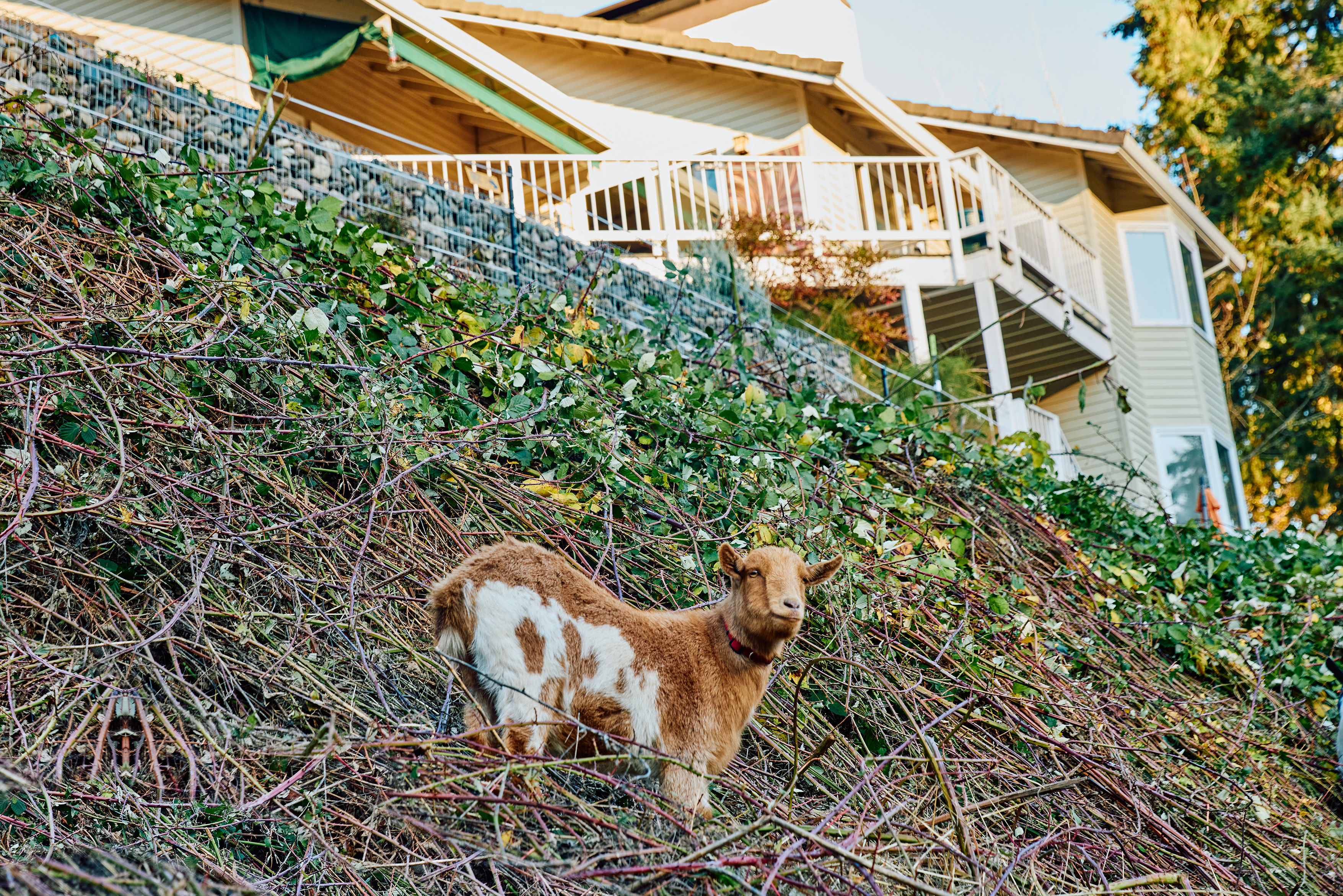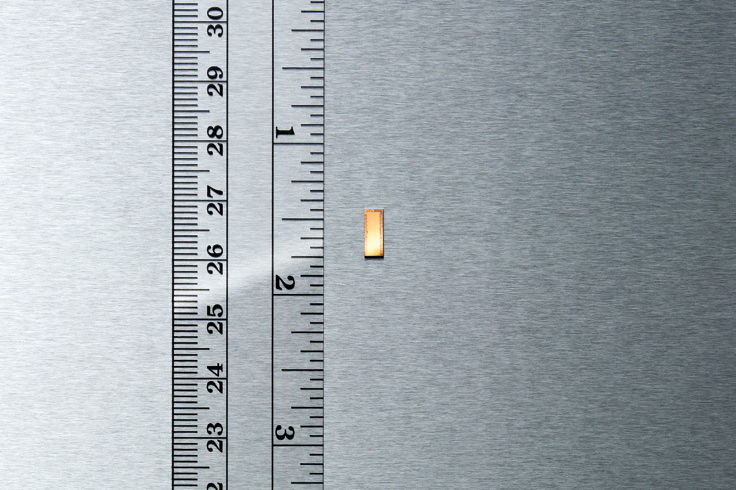
The Ripple Effect
Power Aid
THIS MICROPROCESSOR TAKES A BYTE OUT OF ENERGY WASTE
From iPhones to the growing wave of MIDs (Mobile Internet Devices), we’ve become a society obsessed with handheld entertainment. But powering all this gee-whiz gear takes some serious juice. Video applications and complicated networking systems tax a device’s computer chips and batteries, which means you’ve got to suck more electricity from the grid to charge up more often. So unless you carry around solar panels (and you can, but that’s another story), a considerable amount of carbon is required to keep everyone logged on to Facebook and Outlook from their BlackBerries. Enter the super-fast, low-power Intel Atom Processor. Released in March, this chip is specifically designed for the palm-sized devices of today. The teensy microprocessor (their smallest ever—you could fit about 25 of them in your hand) improves the energy efficiency of handheld devices by about 10 times that of Intel’s 2006 model, which means you won’t have to plug in as much. We’re not saying the Atom is going to save the world—silicon chips still take a lot of water to create—but at least it’s doing its itty-bitty part. —Christian DeBenedetti

Staying Power
HOTELS THAT TAKE CARE OF YOU—AND THE GLOBE
Once upon a time, there was little an eco-conscious traveler could do to combat the hotel industry’s inherent wastefulness—besides asking housekeeping not to wash the sheets each day. “Hotels have been slow to accept green building practices,” says architect Gary Golla, an associate at Portland’s SERA Architects. Times have changed. More than 200 hotels nationwide are currently seeking some kind of LEED (Leadership in Energy and Environmental Design) certification, which recognizes buildings that meet benchmarks for saving energy and reducing waste, thanks to innovations like low-flow water fixtures and energy-efficient appliances. And several Portland hotels are leading the charge. Downtown’s Courtyard by Marriott Hotel, for example, is close to becoming the third hotel in the country with LEED Gold certification, and Golla expects the Nines—an extravagant 331-room “eco-luxury” hotel that opens this fall in the Meier & Frank Building—to earn LEED Silver status, becoming one of only a handful in the country to do so. But don’t think Portland’s hotel industry is just now jumping on the sustainable hospitality bandwagon: In 2004 the Doubletree Hotel Portland became the state’s first hotel to earn a stamp of approval from Green Seal (a D.C.-based nonprofit that recognizes businesses for having sustainable practices) by installing low-flow showers in all the rooms and composting food waste from the hotel restaurant. Four years later, it seems likely that the hotel chain helped inspire a chain reaction. —Camas Davis
Crushed With Kindness
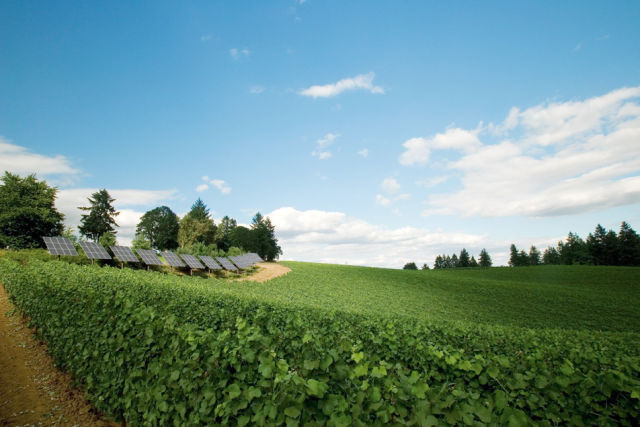
Image: Doreen L. Wynja
OUR WINEMAKERS LOVE THEIR PINOTS AND THE PLANET
Willamette Valley winemakers and grape growers have long been heralded for world-renowned pinots that rival even the best coming out of France, but that’s not the only way they’ve made a name for themselves. For the region’s leading vintners, today’s wines must be as easy on the earth as they are on the palate. In fact, all told, more than a third of the Willamette Valley’s 250 or so wineries are engaged in some form of sustainable winemaking and viticulture. Consider, for example, Doug Tunnel of Brick House Vineyards, who has been employing organic and biodynamic farming techniques—a rigorous form of organic viticulture—since he planted his first grapes in the northern part of the valley in 1990. Or Eric Hamacher, winemaker and owner of Hamacher Wines, who, in 2002, built the cooperative Carlton Winemakers Studio partly out of recycled wood (from a schoolhouse) and aluminum (from a dismantled Wal-Mart). Hamacher buys grapes only from vineyards that have been certified by Low Input Viticulture & Enology Inc (LIVE), a Salem-based organization founded in the mid-1990s that developed a system for rating and approving vineyards on the basis of ecologically sound viticulture practices. The owners of Dundee’s Sokol Blosser Winery also have certified their vineyards through LIVE, and last year, they installed a solar-panel system on the edge of their vineyards; it generates enough energy to meet at least one-third of the winery’s needs. We have the Willamette Valley’s counterculture heritage to thank, at least in part, for developing the green winemaking tradition. “The first people who established vineyards around here were essentially hippies,” Hamacher points out. “They understood that the weather was such that you didn’t need to use modern chemicals. We don’t have a lot of pests and diseases that other winemaking areas have, so it was easier for them to grow sustainably from the beginning.” And that’s a tradition today’s vintners are only too happy to continue. —CD
Foot Fetish
SHOES THAT LET YOU TREAD LIGHTLY
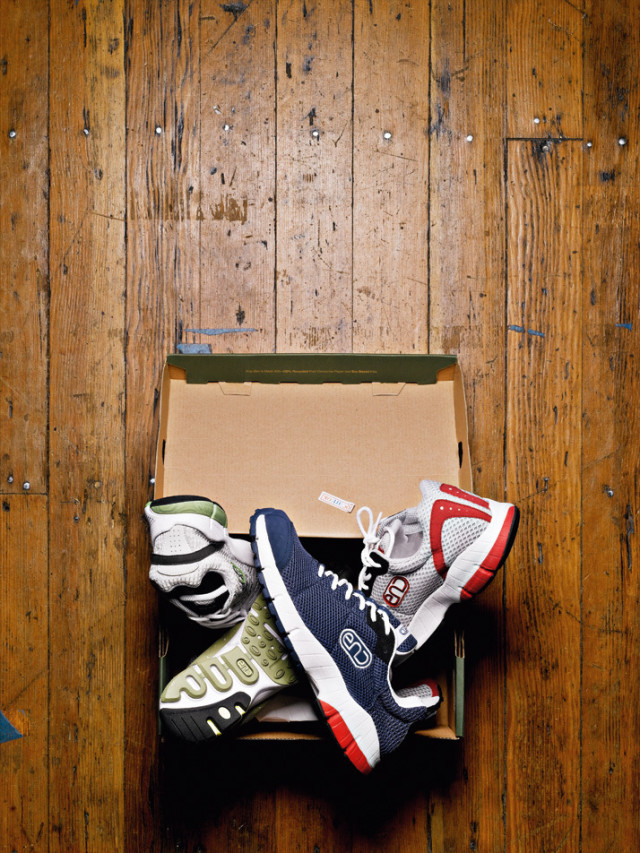
When it comes to shoes, going green without going completely barefoot has never been easy. Leather comes from livestock; nylon from petroleum. “Look, any piece of footwear is made almost entirely out of oil,” says Jay Peery, director of sales for Environmentally Neutral Design (END), a Portland shoe company that formed in August 2007. Peery and his colleagues—a trail-tested band of former Nike and Columbia Sportswear execs—have set out to change that. To wit: All END shoes use bamboo fibers in their liners, and the laces and webbing are made from recycled soda bottles. Moreover, the shoes use 30 to 50 percent less material (like webbing and padding) and less glue than the typical running shoe, creating a lighter sneaker (10 ounces, compared to most others, which weigh between 12 and 15). The price is a little lighter, too—when the line of 13 models debuts in stores this fall, each pair will retail for $65 to $95. Still, the END team isn’t satisfied—they’re hoping to find a way to make a shoe entirely from materials that will decompose quickly in landfills. “And we have a dream of eliminating the shoe box entirely,” says Peery. Now that’s thinking outside the box. —CDB
Data Dump
MACHINES HAVE AFTERLIVES TOO
Computers are dirty things. And we’re not just talking about the poppy seeds lodged in your keyboard. Each year computers make up 3 million tons of the trash in our country’s landfills, and as they decompose, they leach more than 70 hazardous toxins—like lead, mercury, and cadmium—into the earth. Which is why in 2006, the Portland-based Green Electronics Council launched www.epeat.net (Electronic Product Environmental Assessment Tool, or EPEAT), a kind of online environmental clearinghouse for computers and other electronics. The site provides detailed information on more than 500 computers, such as the amount of heavy metal each one contains, how energy efficient it is, and whether the manufacturer will collect and recycle old machines. Models that pass muster are stamped with EPEAT’s Bronze, Silver, or Gold award, a sort of LEED certification for computers. In 2007, consumers worldwide bought 109 million EPEAT-approved computers, keeping 124,000 metric tons (the equivalent of 700 passenger planes) of hazardous waste out of landfills and reducing greenhouse gases by about 3.31 million metric tons (that’s like taking 2.6 million cars off the road for a year). Now that’s what we call purchasing power. —KC
Forest Fund
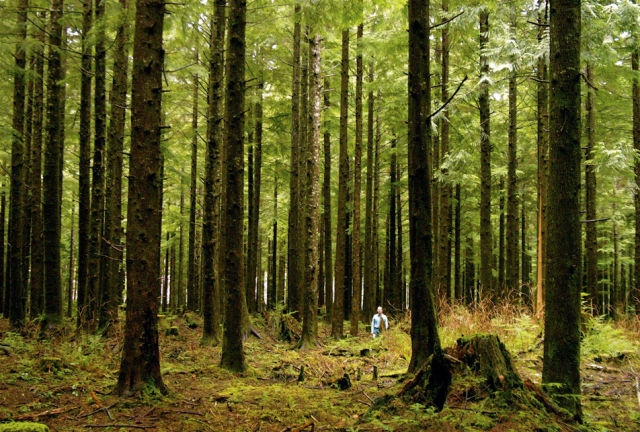
Image: Spencer B. Beebe
MONEY DOES TOO GROW ON TREES
When Yvon Chouinard, the trendsetting founder of Patagonia, turned 65 in 2003, he took a good look at his 401(k) and decided to reinvest part of it in the thing that had made him so successful in the first place: nature. More specifically, he invested in Ecotrust Forests LLC, a one-of-a-kind fund run by Portland’s bigwig conservation group Ecotrust, which makes its money, somewhat surprisingly, from logging. But don’t scramble down to Opal Creek to chain yourself to a bulldozer just yet. While most timber investment groups buy huge swaths of 38- to 40-year-old trees, clear-cut them, and then sell the scarred land to the highest bidder, Ecotrust takes a different approach. It buys 1,000- to 5,000-acre parcels of land in Oregon and Washington that hold younger forests—about 20 years old—and it partners with local timber companies to log in a sustainable fashion: That means harvesting no more than 25 to 35 percent of the trees each year and replanting. At the same time, Ecotrust contracts with wildlife biologists to ensure the protection of any watersheds or streams in the forests it logs. “We manage our land with the idea that we’ll own it forever,” says Leif Olsson, the fund’s CFO. Currently, the fund owns 13,000 acres; it hopes to acquire up to 250,000 by 2014. In the past two years, the fund’s 30 or so investors have seen pretax returns around 9 percent, an amount that’s only slightly less lucrative than investing in Standard & Poor’s 500 Index, and that’s higher (and much less risky) than most real estate or bond investment portfolios. Looks like, once again, Chouinard’s ahead of the curve. —CD
Rest Easy
RECLAIM YOUR LIVING ROOM
“What if chairs gave you butt cancer?” That’s the question that If Green’s CEO Lisa Grove had printed on T-shirts for her employees. It’s an absurd question, sure, but Groves sees it as a great way to start talking about the volatile organic compounds (VOCs) in the paints and finishes used to gussy up your furniture, which can release harmful gases into your home. However, If Green uses low- or no-VOC paints and finishes for its line of modern tables, chairs, and other pieces. Moreover, If Green, along with fellow Southeast Portland companies Ecohaus and Endura Wood, are the only three furniture outfits in Oregon whose commitment to using responsibly harvested timber has earned them certification by the Forest Stewardship Council (FSC). “The backbone of Portland was built from all this great old Douglas fir,” says Grove, who requires that 80 percent of her stock comes from FSC-certified wood. Which means when you bring home a chair from If Green, Ecohaus, or Endura, you also could be adopting a little piece of Portland’s sturdy heritage. —John Chandler
Wonder Wall
PLANET-SAVING PARTICLEBOARD
Until we live in houses made of recycled soda bottles, home builders will depend on trees—and a lot of them at that. Erecting a 2,500-square-foot home takes about 60 50-year-old trees, which can exact a heavy environmental toll. Enter the Portland-based Collins Companies. In 2006, they introduced Pine FreeForm, the first FSC-approved particleboard made from 100 percent postindustrial waste, like sawmill shavings and discarded pallets. Pine FreeForm also contains no urea-formaldehyde, the glue that typically holds particleboard together, which has been linked to throat cancer. Not only did the product earn Collins a Top 10 New Green Building Products award at the U.S. Green Building Council’s 2007 conference, but Collins reports that sales are going through the roof. —CDB
One Sign Fits All
A PAPERLESS MORTGAGE. REALLY.
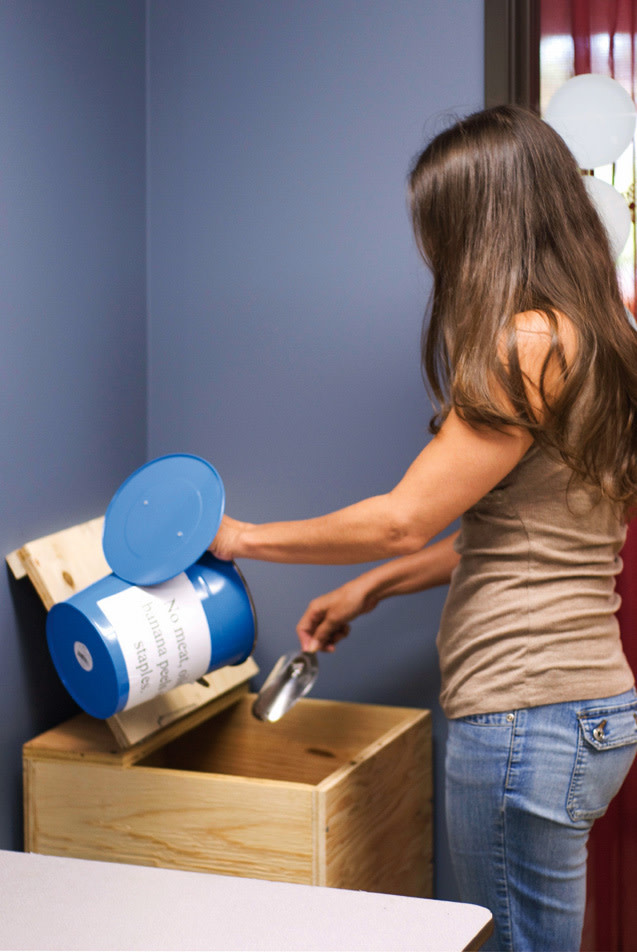
Anyone who’s ever bought a house is familiar with the writer’s cramp that goes along with initialing hundreds of forms, which is why it’s rather surprising that at Rose City Mortgage Specialists you sign on the dotted line only once. That single document authorizes buyers’ signatures to be used on all forms, which are then passed along electronically—an innovation that makes the broker one of the few firms in the city to offer a paperless mortgage. Besides a warm fuzzy feeling, you’ll also get a financial bonus: When Rose City submits a client’s loan to a lender electronically, an eighth of a point is knocked off the interest rate. On a $300,000 home with a 30-year fixed interest rate, that’s about $8,640 saved over the years. But cleaning up paper trails isn’t the only reason Rose City Mortgage has earned the Portland Office of Sustainable Development’s RecycleWorks Award three years running. Rose City also started using a composting bin stocked with worms that chow down on everything from coffee grounds to mysterious leftovers from the fridge. And the 18-person company has swapped out 25 wastebaskets for a single trash receptacle in the kitchen. “Now when someone has to leave their desk to throw something away,” says Rose City president Renee Spears, “they’ll think about that garbage a little more.” —JC
(Roof) Top Soil
SPREADING SOD ACROSS THE CITY
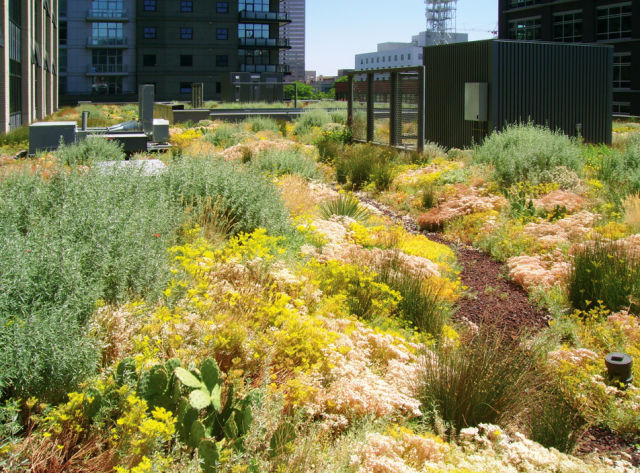
Eco-roofs may seem all the rage right now (you’ll find them everywhere from the Portland Building to the Hawthorne Hostel). But it was only 12 years ago that Tom Liptan installed the city’s first one on his Northeast home’s garage. Now he’s at the head of the city’s Grey to Green Initiative, which aims to increase Portland’s eco-roof acreage from 8 acres (enough to cover about 200 1,500-square-foot houses) to 51 (enough to cover over 55 Pioneer Courthouse Squares). “We have 12,400 acres of rooftops in Portland,” Liptan says. “It’s a little step on a long journey.” Eco-roofs can reduce storm-water runoff by about 50 percent annually, thus helping to prevent flooding and reducing the noxious chemicals that flow into rivers. And, although it can cost a few bucks more per square foot to install an eco-roof instead of a standard one, they last twice as long, which seems like reason enough to swap shingles for topsoil. But if not, the Grey to Green grant and incentive program, which helps offset the cost of installation, might be the final push homeowners and businesses need to garden from above. —KC
Eco-Overlords
BANISHING WASTE FROM OUR KINGDOM
Some companies (and you know who you are) have resorted to “greenwashing”—touting themselves as environmentally virtuous when they aren’t really doing all that much. But thanks to Portland-based nonprofit Zero Waste Alliance (ZWA), those organizations that want to actually walk their talk have made major strides toward a greener future. Made up of representatives from businesses, universities, and government agencies, ZWA works with companies to help them reduce waste—be it materials or energy—from their day-to-day operations. Take Widmer Brothers Brewing. Making those mind-altering ales creates 6,000 gallons of wastewater (the yeasty bilge left over from rinsing the colossal brewing tanks). But in 2004, with the help of ZWA and the Portland-based Food Innovation Center, Widmer began transforming the bilge into animal feed, saving the company about $120,000 annually and leaving ranchers with some very happy cattle. —CDB
Vacuum Pact
CLEAN YOUR CARPETS WITHOUT LEAVING A STAIN ON THE EARTH
Unfortunately, given the harsh chemicals used to zap the stains of your party guests’ uh-ohs, carpet cleaning can be a filthy business. Unless you’re named TerraClean. Since 2003, this cleaning company has been committed to unsoiling rugs using mostly plant-based solvents (which smell better anyway). Southwest Portland resident Jaym Wolfe started the company with environmental scientist Patricia Uber after his sister, who had been in the rug-cleaning business for decades, died of a brain tumor that doctors said could have been caused by repeated exposure to the chemicals used in the cleaning process. Not that TerraClean’s green mission ends with the rug beneath your feet: Company uniforms are made from sustainable and organic fabrics; its fleet of vehicles runs on biodiesel; and the heat released by the vehicles’ exhaust systems warms the water used in cleaning. All of which means a visit from TerraClean doesn’t leave you just with a clean carpet—it also leaves you with a clean conscience. —KC
Strong Medicine
THIS HOSPITAL HEALS MORE THAN PATIENTS
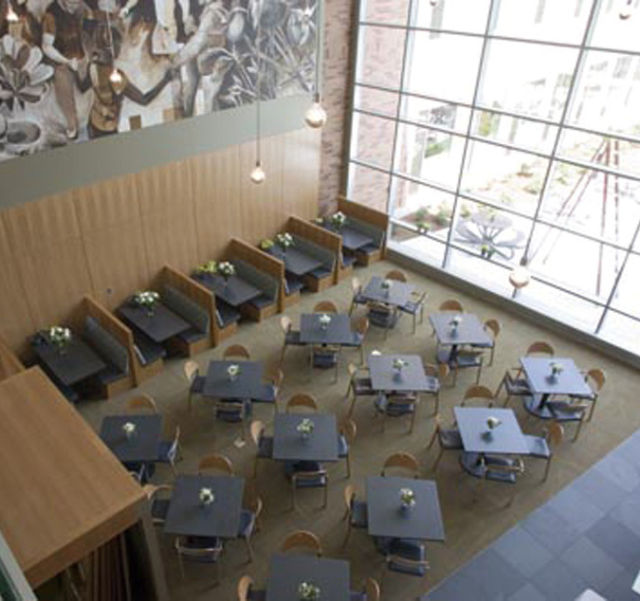
Prodded by their earth-conscious charges, many universities jumped on the eco-bandwagon decades ago, but the hospital and health care industry has been slower to take a planetary Hippocratic oath. No longer: Newberg’s Providence Medical Center—which opened in June 2006 and cost nearly $71 million to build—is the nation’s first LEED Gold certified hospital. Designed by Portland’s Mahlum Architects and engineering firm Glumac, the 56-acre medical campus boasts an array of innovations that save energy and reduce waste. For starters, superefficient boilers and air conditioning units help reduce electricity usage by about 20 percent, while motion detectors ensure that lights are on only when someone’s in a room. What’s more, every watt of electricity supplying the campus comes from a renewable source (like wind or geothermal energy). But the most impressive innovation might be what the medical center is doing for patients themselves: One hundred percent of the hospital’s air comes from outside, which means patients and staff aren’t gulping down germ-laden recycled air. Clearly, this hospital hopes to heal more than just the people who visit it. —CDB
Watt Choppers
A COMPANY THAT HELPS OTHERS POWER DOWN
How many Texans does it take to change a lightbulb? Six. That’s how many people make up the Texas team for Ecos Consulting, the Portland-based environmental consulting firm that helps other companies reduce their environmental impact (while often increasing their bottom lines). This year, Ecos’s Texas crew helped eight Lone Star State utility companies install more than 1.5 million compact fluorescent lightbulbs in homes—saving homeowners $30 over the life of each bulb and reducing carbon dioxide emissions by about 1 billion pounds. Founded 12 years ago, Ecos has grown to 150 employees, with offices in four states and a client roster that includes Coca-Cola, Burgerville, Full Sail Brewing, and bottled-water giant Calistoga. (Ecos helped Calistoga reduce its energy consumption by 1 million kilowatt hours annually—enough to power about 90 houses for a year—saving the company close to $200,000 annually.) Next up? Identifying the 10 most energy-efficient products in a variety of areas, from dishwashers to CD players, as part of their Top Ten initiative. So when you replace that home stereo system, you’ll know exactly how much juice you’re using—and saving—while rocking out to the Decemberists. —KC
Counter Culture
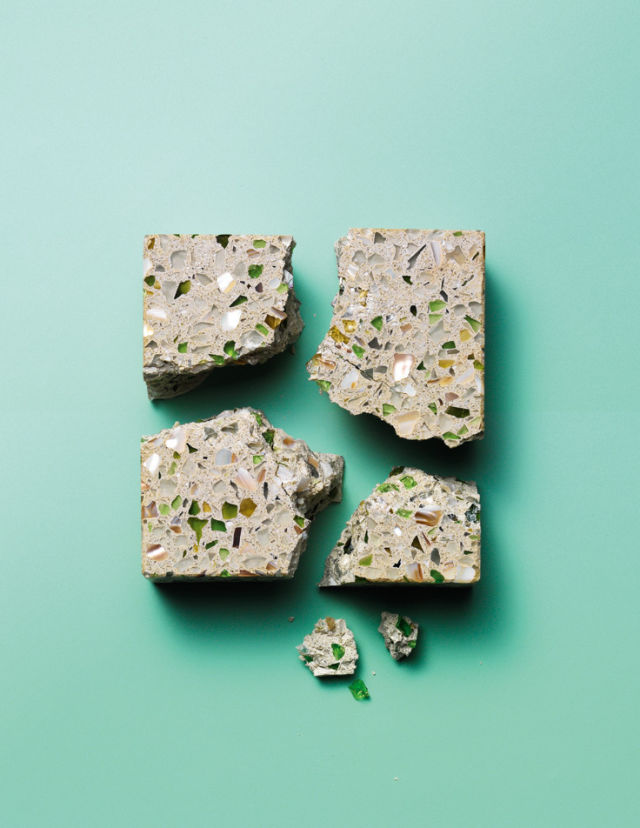
Image: Adam Levey
KITCHEN GLASSWARE GONE WILD
All good parties end in the kitchen, where guests gather to laugh, chat, and drain that last bottle of wine. Which makes the kitchen a prime place to show off your commitment to protecting the planet. Those wine bottles, once recycled, might make their way into the countertops made by Fuez, a NoPo firm with four product lines made from up to 85 percent recycled material—a mixture of glass, fly ash (a by-product of coal-burning), and cement. Even better, Fuez counters earn homeowners 5 of the 39 points they need for LEED Gold certification. The style points? They’re just a bonus. —CDB


